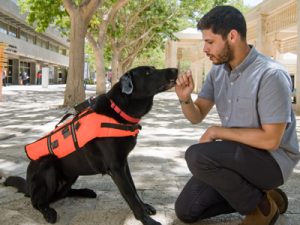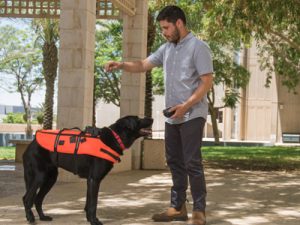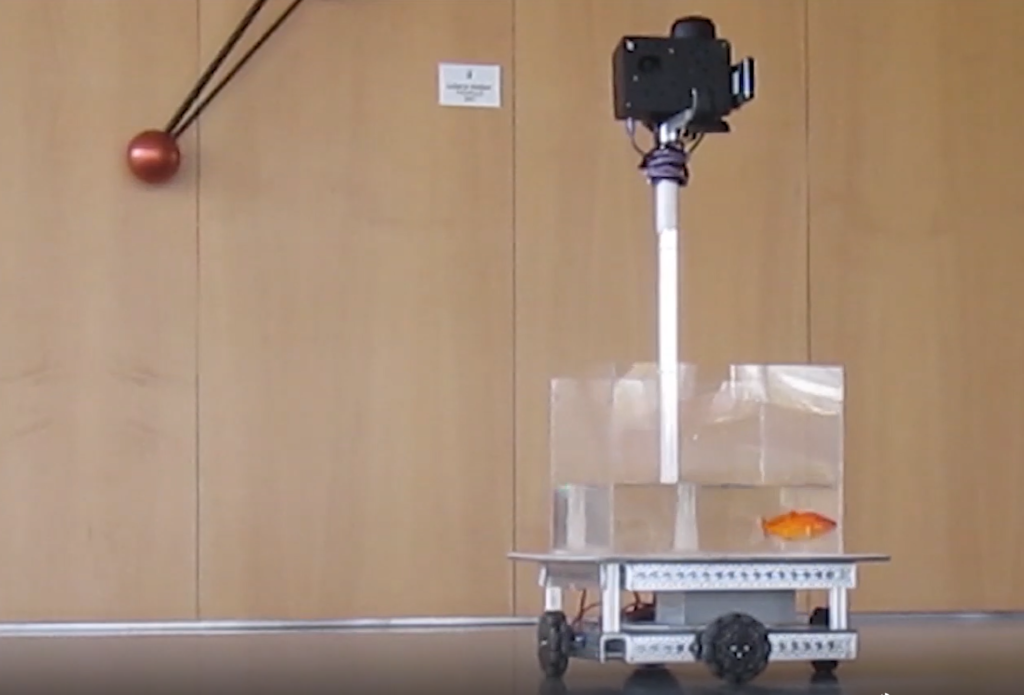
New Vest Lets You “Talk” to Dogs Without Speaking
New Vest Lets You “Talk” to Dogs Without Speaking
July 10, 2019
National Geographic – It turns out you can teach an old dog—or, at least, a middle-aged one—new tricks. Without any vocal or visual cues, a Labrador mix named Tai can turn, back up, lie down, and come on command. He does all this in response to remote-controlled vibrations in a newly developed dog vest designed by Israeli scientists at Ben-Gurion University of the Negev.
In results presented this week at the IEEE World Haptics Conference in Tokyo, the researchers report that cues issued by gentle vibration motors in the vest were as effective as vocal commands. Of course, Tai’s favorite treats of sausage pieces helped make him a fast learner.
There are practical and important applications for a haptics dog vest, explains lead author Yoav Golan, a Ph.D. candidate in BGU’s Department of Mechanical Engineering, who has been Tai’s owner ever since the dog failed an exam to be a seeing-eye guide when he was a lovably hyperactive puppy.
“Communication with working dogs is still predominantly visual and audial,” the team writes in its paper. But search-and-rescue or tracker dogs often work at a distance from their handlers, under rubble, in small spaces, or out of sight and earshot. The haptic vest would allow people to issue instructions even under such circumstances. Vibration commands could also be suitable for secret operations done in silence.
Similarly, police and military canines might find the vest useful if they are working in loud areas, such as conflict zones filled with gunfire, where vocal communication is difficult. Handlers and even dogs “sometimes use earmuffs to protect their hearing in noisy situations, such as aircraft travel,” Golan says.
For the latest study, the Israeli team built a special casing for the vibration motor that sits inside the vest. The rectangular casing is about an inch and a half long, with elongated nubs that enable better contact with the skin through the dog’s fur. These nubs more effectively transmit vibrations to bony areas near the dog’s hips and shoulders and don’t require shaving his coat. Inspiration for this design came from coauthor Ben Serota, a neuroscientist who works with comb-shaped “dry electrodes” that attach to patients’ heads without shaving their hair.
Watch Tai respond to vibration commands in the video below.
The results showed that the dog could associate discrete commands with vibrations from four different motors near the top of each of his legs. The dog was also able to distinguish between steady vibrations and pulses, which shows the potential for dogs to learn commands of varying complexity.
For this work, Tai has become Israel’s only government-registered research dog. Before any experiments, it took months to get approval from BGU’s animal research ethics committee and Israel’s ministry of health. The University also has veterinary staff who check on experiments and the conditions for animal subjects. The vibrations are painless, similar to a vibrating smartphone.
Read more on the National Geographic website >>
Photos courtesy of Jonathan Atari/Ben-Gurion University of the Negev





